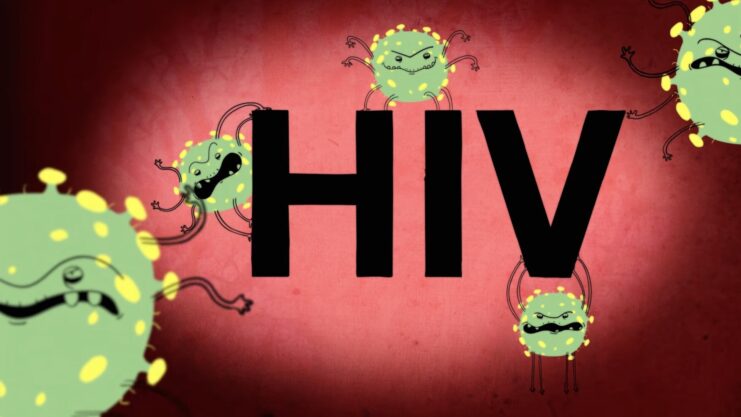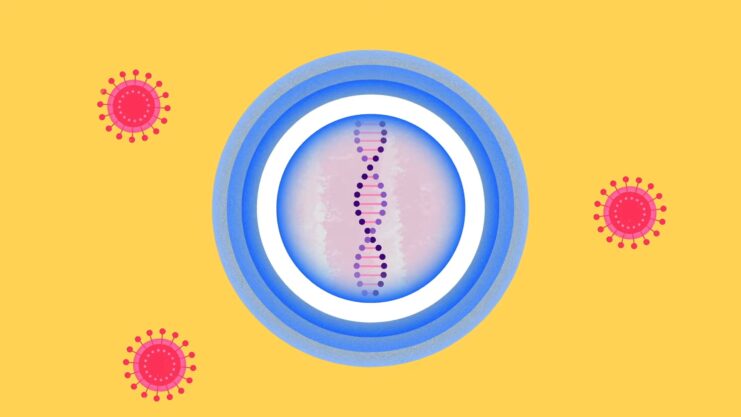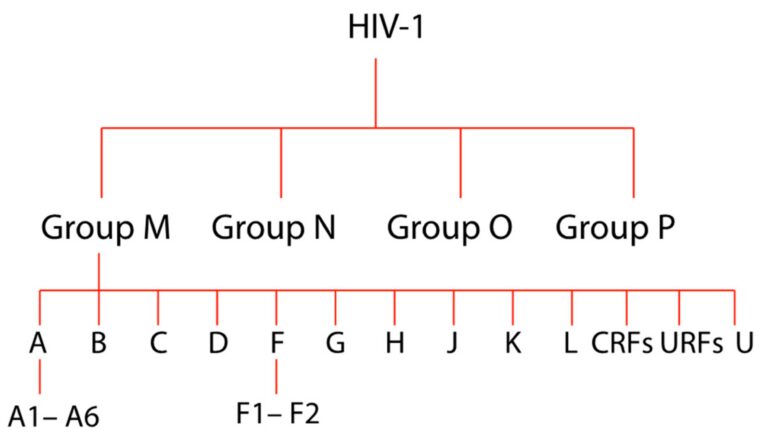It’s a well-known fact that unprotected intimacy with an HIV-positive individual can lead to an HIV infection. Yet, the intricate dance of how the HIV virus enters and establishes itself in the body remains a mystery to many.
This article will take you on a journey through the body’s defenses, illustrating how the cunning HIV virus maneuvers its way to achieve its objective. Think of it as a war story, where the body’s defenses are the fortified walls and the HIV virus, the relentless invader.
HIV, or Human Immunodeficiency Virus, is a microscopic entity. Picture it as a minuscule ball. Within this ball lies an even smaller strand of genetic material known as RNA. This RNA is the essence of the virus, and its primary goal is to integrate itself into the host’s T-cells. Once inside the T-cells, the RNA merges with the cell’s DNA, making the infection both unstoppable and incurable.
The Objective of HIV

The HIV virus faces a significant challenge. The T-cells, its ultimate target, are nestled deep within the body. To reach these cells, the virus must navigate a maze of biological defenses, each designed to halt its progress.
The Formidable Foe
HIV’s resilience and adaptability make it a formidable foe. Its ability to mutate and develop resistance to treatments has made it one of the most challenging viruses to combat. Understanding its structure and function is crucial in the fight against HIV.
The Body’s Fortifications: Our Natural Defenses
Our body is not defenseless against invaders. From the outermost layer of our skin to the inner workings of our immune system, various mechanisms work tirelessly to protect us from harmful entities like the HIV virus.
The Great Wall: The Skin

Our skin acts as the first line of defense. The outer layers, made of robust dead cells called keratin, are impenetrable to the HIV virus. It’s akin to a fortress wall, keeping out unwanted invaders.
The Mucosal Shield
During intimate contact, the HIV virus can come into contact with mucosal membranes, such as the inner lining of the mouth, vagina, and rectum. Unlike the skin, these areas are more vulnerable. However, they are not defenseless. The mucosa has tight junctions that act as barriers, preventing the HIV virus from passing through.
The Body’s Minefield: Anti-Microbial Peptides
These are the body’s secret weapons. Think of them as mines scattered across a battlefield. They are proteins designed to neutralize any microbe, including the HIV virus, that ventures too close.
The Sentries: Anti-Viral Antibodies
Floating within our bloodstream are antibodies, the vigilant sentries of our immune system. Their job is to detect and neutralize viruses. When they identify a threat, they either neutralize it directly or alert other immune cells to the danger.
The Confrontation: HIV vs. The Body’s Defenses
The battle between the body and the HIV virus is intense. While the skin provides a formidable barrier, the virus has other strategies to gain entry.
The Mucosal Breach
The mucosa, while protective, is not as impervious as the skin. The HIV virus can exploit gaps between mucosal cells, gaining access to the sub-mucosal region. It’s akin to an enemy finding weak spots in a fortress wall and infiltrating the stronghold.
The Deceptive Tactics: Dendritic Cells & Trojan Horse Leukocytes
The HIV virus employs deceptive tactics to bypass the body’s defenses. Dendritic cells, which guard the mucosa, can inadvertently provide the virus with an entry point. Similarly, the virus can hide within white blood cells, using them as Trojan Horses to gain access to the body’s interior.
The Final Stand: T-Cell Infection
Once inside the body, the HIV virus seeks out T-cells. If it successfully merges with a T-cell’s DNA, it establishes a reservoir of infection, making the disease incurable.
The Outcome
The battle can end in two ways: the body’s defenses neutralize the HIV virus, or the virus successfully infects the T-cells. Even a single successful infection can lead to a full-blown HIV infection.
Sneak Attacks: HIV’s Cunning Strategies

The HIV virus, like a seasoned warrior, knows that a direct assault might not always yield success. Thus, it employs various stealthy tactics to catch the body off-guard and establish a stronghold.
Exploiting the Dendritic Cells
Dendritic cells, the guardians of our mucosa, sometimes overextend their protective arms, reaching the mucosal surface. This overextension can inadvertently give the HIV virus a direct entry point, bypassing many of the body’s primary defenses. It’s akin to leaving the gates of a fortress slightly ajar, allowing the enemy to slip in unnoticed.
The Trojan Horse Tactic
The Trojan Horse strategy is one of the most cunning tactics employed by the HIV virus. By hiding within white blood cells present in bodily fluids, the virus can enter the body without raising alarms. Once inside, the virus emerges from its hiding place, ready to attack the T-cells and establish an infection.
The Aftermath: Living with HIV
Once the HIV virus establishes itself within the body, the battle enters a new phase. The body’s immune system continuously fights the virus, but the virus has strategies to persist and propagate.
The Reservoirs of Infection
Even with antiretroviral therapy, which can suppress the HIV virus, reservoirs of the virus remain in the body. These reservoirs are groups of infected cells that remain dormant but can reactivate if treatment is stopped. This makes complete eradication of the virus challenging.
The Impact on the Immune System
Over time, the HIV virus can weaken the immune system, making the body more susceptible to other infections and diseases. This stage, if not managed, can lead to AIDS (Acquired Immunodeficiency Syndrome), where the immune system is severely compromised.
Prevention and Hope
While the battle against HIV is intense, there are measures one can take to prevent infection and live a healthy life even if infected.
Preventive Measures
- Safe Practices: Using protection during intimacy and avoiding sharing needles are primary preventive measures.
- Regular Testing: Regular HIV testing ensures early detection, which can lead to better management.
- Pre-exposure Prophylaxis (PrEP): A daily medication for those at high risk of HIV, reducing the chances of getting infected.
Living Positively with HIV
With advancements in medical science, being HIV-positive is no longer a death sentence. Proper medication, regular check-ups, and a healthy lifestyle can enable individuals to lead a normal life.
FAQ
What is the difference between HIV and AIDS?
HIV stands for Human Immunodeficiency Virus, which attacks the immune system. If untreated, it can lead to AIDS (Acquired Immunodeficiency Syndrome). While all people with AIDS have HIV, not everyone with HIV has or will develop AIDS.
How is HIV transmitted?
HIV is mainly transmitted through unprotected sexual contact, sharing of needles, from mother to child during childbirth or breastfeeding, and through blood transfusions from an infected person.
Can HIV be transmitted through casual contact like hugging or sharing food?
No, HIV cannot be transmitted through casual contact, touching, hugging, or sharing food or drinks.
Are there vaccines available for HIV?
As of now, there is no effective vaccine for HIV. However, research is ongoing, and there are preventive measures like PrEP that can significantly reduce the risk of infection.
Can antiretroviral therapy cure HIV?
While antiretroviral therapy (ART) cannot cure HIV, it can control the virus and prevent its progression to AIDS. It also reduces the risk of transmission.
How often should one get tested for HIV?
It’s recommended for sexually active adults to get tested at least once a year. Those with multiple partners or other risk factors should consider getting tested more frequently.
Can people with HIV live a normal lifespan?
Yes, with early detection and proper treatment, many people with HIV can live a near-normal lifespan.
Final Words
Understanding HIV and its intricate dance with our body’s defenses is crucial in today’s world. While the virus has evolved various strategies to infect its host, knowledge, awareness, and preventive measures remain our best weapons. Let’s continue to educate ourselves and others, dispel myths, and work towards a world free from the threat of HIV.
Related Posts:
- How Long Can HIV Live Outside the Body? The Clock Is Ticking
- 3 Male Body Types: Ectomorph, Mesomorph, Endomorph
- Lipomas: Common Lumps & Bumps – Closer Look at Your Body
- What Does OBJ Mean In Text? - Reason And Solution…
- What Does “Arrived At Hub” Mean In USPS? - Learn…
- YouTube Vanced Not Working: Does Vanced Really Exist Now?













